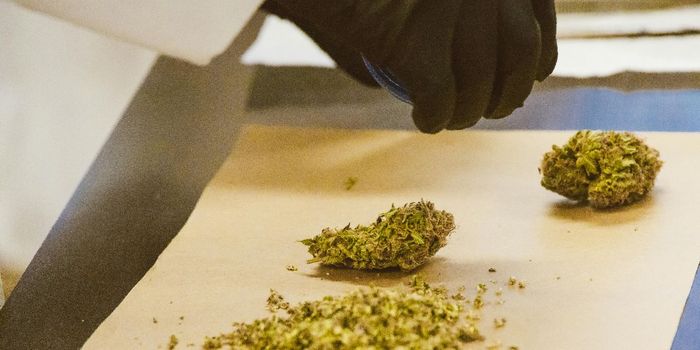Exercise Reverses Learning Impairments from Cannabinoid Issues
While cannabinoids usually get attention for their recreational effects, these molecules play a role in several other processes, too- including learning. Now, researchers from Portugal have found that learning impairments caused by genetically disabled cannabinoid receptors in mice can be repaired by a simple behavioral intervention- exercise.
For the study, the researchers subjected mice, who had been genetically modified to lack cannabinoid receptors, to a classical learning task known as eyeblink conditioning. For the task, the mice learned to associate a sensory stimulus, a flash of light, with a puff of air to the eye. Once learned, they tended to close their eyes when the light appears to avoid the air puff- like Pavlov’s dog abiding by a bell.
In doing so, the researchers found that the mice genetically engineered to lack cannabinoid receptors tended to learn more slowly than mice without the mutation. As previous studies have suggested that cannabinoids mediate neural plasticity, they initially thought that interfering with this process may fix the issue. Tests to confirm this, however, showed that this was not the case.
As such, the researchers then thought back to a study they conducted two years prior, finding that the more ice ran, the better they were able to learn. To test whether reduced activity levels among the mice may have impaired learning in the cannabinoid receptor-deficient mice, the team placed all the mice on a motorized treadmill and ensured that both they and their genetically-normal counterparts walked just as much.
As such, they found that both the normal and mutant mice were able to learn at the same rate. The researchers also found that other cerebellar behaviors, locomotor coordination, and learning returned to normal in the genetically-altered mice.
“These experiments further supported our hypothesis that disrupted cannabinoid signaling was impairing learning by altering behavioral state, and not through direct effects on neural plasticity in the cerebellum,” says Megan Carey, one of the study’s authors.
“There is a growing body of evidence that behavioral state profoundly influences brain function...Our study highlights the need to consider the behavioral state as a powerful independent means through which individual genes contribute to complex behaviors.”
Sources: Neuroscience News, eLife









